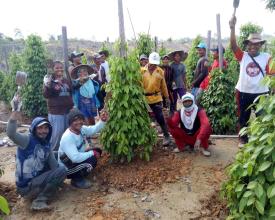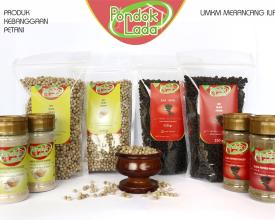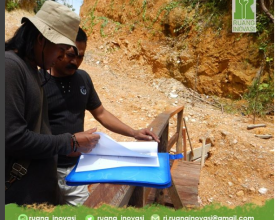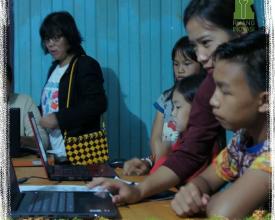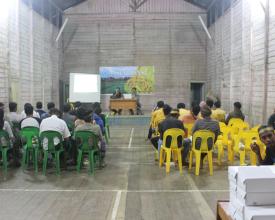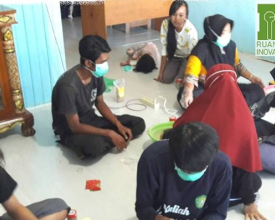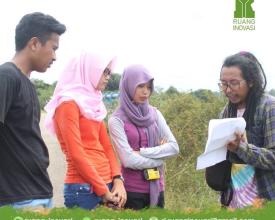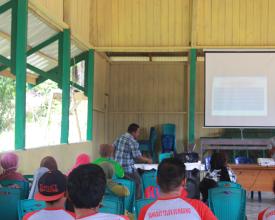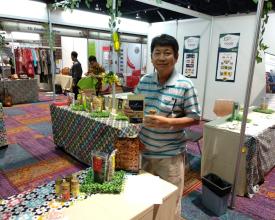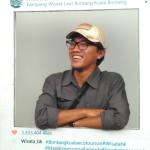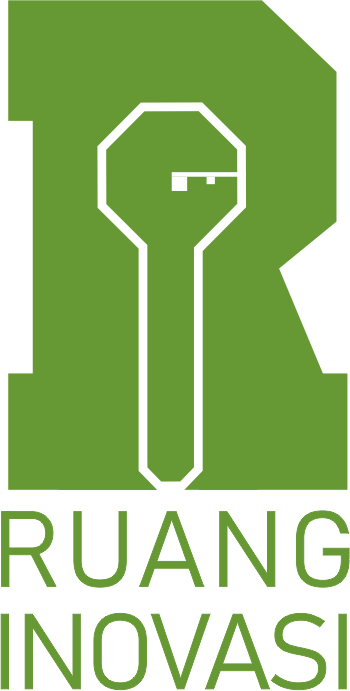
L'agriculture durable grâce à une technologie applicable de pointe
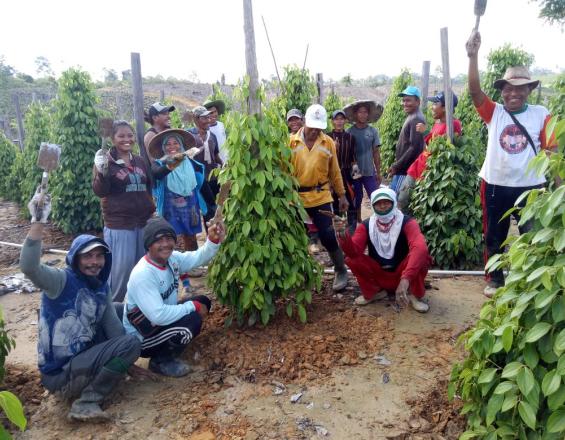
Le développement de l'agro-industrie en tant qu'option compétitive pour les agriculteurs/les personnes qui vivent dans les zones minières et les plantations d'huile de palme est une idée très simple et facile à mettre en pratique pour les populations rurales. Grâce au développement de l'agriculture durable combiné à l'innovation des produits post-récolte, les revenus de cette activité peuvent devenir très compétitifs par rapport au sacrifice de leurs terres pour être converties en zones minières et de plantations d'huile de palme pour les grandes entreprises. Nous pensons qu'en pratiquant l'agro-industrie durable, les gens peuvent protéger leur écosystème tout en améliorant leur qualité de vie sur le plan financier. C'est ce concept que nous allons inculquer aux jeunes par la pratique. Ensemble, avec l'aide des autorités locales, de la société civile et des entreprises, nous encourageons les jeunes à continuer à innover dans le secteur de l'agriculture et de la transformation post-récolte, car ce sont les meilleurs choix pour protéger leur écosystème et leur avenir.
Contexte
Défis à relever
- Difficile de communiquer le concept de développement à la population locale
- La situation politique peut varier localement et régionalement
- Il est difficile de motiver les jeunes à innover en matière de produits lorsqu'il y a un risque d'échec commercial.
Emplacement
Traiter
Résumé du processus
Première étape du développement de l'agro-industrie à Merancang Ilir, nous avons réalisé une cartographie participative qui contient également des critères/facteurs politiques, ce qui nous permet d'avoir une analyse interne pour intervenir dans le développement du village. Nous avons soigneusement choisi les personnes clés afin de minimiser les conflits internes au village. Le résultat final de la cartographie donne une légitimation aux agriculteurs pour avoir leur propre zone d'agro-industrie et il est synchronisé avec le plan de développement du village. Après avoir aidé à organiser les agriculteurs, nous avons aidé à organiser un groupe de femmes d'agriculteurs pour créer une entreprise villageoise, Pondok Lada. Actuellement, nous nous concentrons sur la production de produits post-récolte de poivre, de baies de poivre calibrées et de poudre de poivre. Nous facilitons également le développement de la gestion de Pondok Lada pour en faire une entreprise plus professionnelle, comme une formation à la comptabilité, la création d'un plan d'affaires, des stratégies de marketing, etc. Actuellement, nous aidons également à gérer un groupe de recherche et de développement au niveau du village qui se concentre sur la manière d'améliorer la qualité des poivrons, en menant des recherches sur l'intensification de la pisciculture et en créant des engrais organiques à partir des déchets de la pisciculture afin d'assurer la durabilité de l'agriculture biologique.
Blocs de construction
Cartographie participative combinée à un système d'information géographique intégré
Merancang Ilir est situé sur la rive de la rivière Segah dans le district de Berau, Kalimantan Est, Indonésie. La rivière est l'une des plus grandes rivières de Berau. Elle est généralement utilisée par les barges des compagnies minières d'huile de palme et de charbon pour transporter l'huile de palme brute (CPO) et le charbon. La majorité des villages situés de part et d'autre de la rivière ont été acquis par ces entreprises, jusqu'à 80 % de leur territoire. Mais Merancang Ilir est un village unique, dont les habitants croient toujours que sans ces entreprises, ils peuvent encore prospérer grâce à l'agriculture. Ils croient également qu'en laissant entrer ces entreprises, ils n'obtiendront pas de réponse à la question de savoir comment accroître l'égalité économique. Pour soutenir ces rêves, nous avons l'intention de les aider à devenir économiquement indépendants dans le système agricole. Avant de commencer à agir, nous devons réaliser une cartographie participative afin d'acquérir une connaissance plus détaillée du potentiel et des problèmes actuels du village. En utilisant les SIG et en organisant une formation de base pour les villageois, ces derniers peuvent établir des stratégies de développement basées sur l'agriculture durable et l'agro-industrie.
Facteurs favorables
- Le village et son administration comprennent le concept et la technique de base de la cartographie de ses ressources potentielles après la formation de base sur les SIG que nous avons dispensée.
- A partir des résultats de la cartographie, le village comprend comment construire un plan à moyen terme.
- L'administration du village comprend les règles de la zone de développement du village (zone de conservation, zone agro-industrielle et zone de recherche).
- Les villageois comprennent le concept et la mission de ces plans et deviennent des acteurs actifs de leur exécution.
Leçon apprise
- Utiliser les mots les plus familiers et les plus simples et déconstruire les idées complexes en briques d'exemples simples et d'analogies pour les expliquer aux populations locales.
- Les habitants comprennent comment élaborer un plan de cartographie, notamment quelles données ils recueillent, comment compiler ces données et comment procéder à une analyse de base de ces données et les intégrer dans les politiques locales et le plan de développement du village.
- Outre la cartographie spatiale (informations générales sur la situation géographique et les frontières administratives), sociale (informations générales sur le profil de la population) et sectorielle (informations spécifiques sur le potentiel ou la situation du village, telles que l'agriculture, l'éducation, la santé, etc.), la cartographie des principaux responsables doit être réalisée afin d'assurer le bon déroulement du programme ; en outre, la prochaine personne responsable/leader doit être issue de la communauté locale afin de garantir la viabilité future du programme.
- Comprendre quelles sont les agences gouvernementales avec lesquelles il faut collaborer et comment établir une bonne relation entre le village et ces agences.
Création et soutien au développement des organisations villageoises.
Après l'exécution de la cartographie participative et la création d'un plan à moyen terme, il est nécessaire de mettre en place des plans d'action de suivi à court terme, tels que
1. Faire en sorte que l'union des agriculteurs, l'entreprise villageoise (Pondok Lada) et le groupe de recherche soient légalement reconnus au niveau local et national,
2. Soutenir les stratégies annuelles basées sur la planification à moyen terme, telles que :
a. L'union des agriculteurs doit augmenter le volume annuel des récoltes, ne pas étendre leur agriculture dans la zone de protection des sources d'eau, utiliser des pesticides et des engrais biologiques, classer les baies de poivre pour les vendre à l'entreprise Pondok Lada.
b. L'entreprise achète des baies de poivron calibrées à un prix équitable, après discussion avec l'union des agriculteurs, et produit le produit post-récolte comme un produit instantané, en le transformant progressivement en éco-emballage pour réduire l'impact des déchets plastiques.
c. Un groupe de recherche enseigne comment classer le poivre selon la norme mondiale et comment intégrer chaque type d'agriculture (poivre, pêche) en s'apportant mutuellement des nutriments.
Cette planification annuelle organisée par le village doit être synchronisée avec la planification à moyen et long terme du district et du pays afin de bénéficier d'un meilleur soutien de la part du gouvernement.
Facteurs favorables
- Légalisation des groupes constitués (entreprises, groupes de recherche) au niveau régional et national.
- Création de personnes clés et d'un système de soutien pour la régénération de ces groupes.
- Synchronisation des stratégies annuelles de ces groupes avec la planification à moyen terme de l'administration du village, la planification à moyen et long terme au niveau régional et national, en collaboration avec d'autres mouvements locaux, des universitaires, des jeunes entreprises, des ONG, etc.
- Coordination et partage de données avec les institutions gouvernementales concernées afin d'obtenir le soutien de la planification organisée par le village.
Leçon apprise
- Comprendre le fonctionnement de la ligne de coordination et du système juridique dans les différentes régions.
- Collecter les différentes politiques (par exemple le plan de développement agricole à long terme du ministère de l'agriculture, le plan de développement agricole et énergétique à long terme de la province) pour les synchroniser avec le plan de développement du village de chaque niveau de gouvernement, c'est-à-dire le ministère de la planification et du développement (national ou régional), le ministère de l'autonomisation des villages (régional), le ministère de l'agriculture.
- Connaître la personne clé de chaque secteur du gouvernement, des ONG, des universitaires, c'est-à-dire le chef de la direction du développement des zones rurales au sein du ministère national ou régional de la planification et du développement.
Innovation et développement de produits à l'aide de technologies appliquées
La suite de l'organisation de chaque groupe du village consiste à organiser une formation et un développement de la production post-exploitation, comme l'amélioration de la qualité des matières premières, l'emballage, la commercialisation et la recherche et le développement. La technologie applicable (c'est-à-dire l'intensification de la pisciculture (biofloc), la production d'aliments pour poissons à l'aide de déchets d'élevage de poivrons et de riz soutenus par un traitement mécanique, l'engrais organique à l'aide de déchets d'élevage de poissons traités, etc. Des formations et diverses expositions permettent d'élargir l'éventail des informations sur les marchés et les technologies. Jusqu'à l'étape finale où la population locale est entièrement capable d'exécuter et de développer elle-même la machine. La technologie évolutive qui sera appliquée dans le village doit être contrôlée de manière à ne pas dépasser sa biocapacité (estimation de la capacité d'un écosystème ou d'une zone de production biologique à absorber les déchets et à produire des ressources naturelles).
Facteurs favorables
- mener des recherches initiales sur le développement de produits post-agricoles et l'application de la technologie appliquée
- Élargir la distribution de ces produits aux grandes villes voisines.
- Développement de produits avec divers emballages pratiques et modernes
- Développement d'emballages verts avec des matériaux respectueux de l'environnement et des matériaux de substitution en plastique (c'est-à-dire en utilisant des emballages de substitution en plastique, tels que le plastique provenant d'algues marines, de maizena, etc.)
- Innovation en matière de produits (poudre, huile essentielle, etc.) afin de créer une plus grande variété de produits et d'accroître la valeur de la marque.
- Expansion du réseau vers le marché de l'exportation
Leçon apprise
- Comprendre les entreprises locales avec lesquelles nous allons collaborer et la ligne de distribution régionale.
- Découvrir diverses communautés biologiques et l'innovation en matière de produits, l'innovation en matière d'emballage écologique et la technologie appliquée pour les soutenir.
- Enrichir la connaissance des produits et du marché et de leurs barrières juridiques afin d'améliorer la capacité humaine à surmonter ces défis.
- Utiliser les médias les plus récents comme stratégies de marketing (marketing en ligne), de sorte que les villageois doivent impérativement se familiariser avec les technologies de l'information.
Impacts
- Les gens connaissent leur propre capacité écologique et savent comment ils devraient mener une vie plus saine et plus durable.
- Les gens sont conscients de l'importance du statut juridique de leurs terres avant qu'elles ne soient accaparées illégalement.
- Les gens savent comment gérer leurs terres et leur plan de développement à l'aide d'un système d'information géographique intégré. Grâce à la cartographie participative, les gens savent comment se comporte leur écosystème local, ce qui leur permet de mieux savoir comment le conserver pour les générations futures.
- En légalisant leur politique, les villageois peuvent bénéficier d'une sécurité juridique face aux menaces internes, comme le monopole foncier, et externes, comme l'acquisition de terres par des sociétés d'huile de palme et d'exploitation minière.
- En identifiant les agriculteurs comme la base économique du village, les fonctionnaires ont dû soutenir leurs besoins de résoudre les problèmes en collaboration avec leur communauté de recherche. Les solutions étaient en effet conformes aux lignes directrices de la planification durable qui sont convenues ensemble.
- Les fonctionnaires et les agriculteurs assument ensemble la responsabilité, minimisant ainsi les reproches mutuels.
- Améliorer la biocapacité et la capacité humaine à relever les défis technologiques actuels et futurs.
- Ouvrir les connaissances sur les possibilités actuelles et futures de produire des produits développés. Cela peut augmenter la valeur sur le marché libre et donc renforcer l'économie locale et les capacités humaines locales.
Bénéficiaires
- Il bénéficiera aux populations locales elles-mêmes.
- du niveau local au niveau national
- Les jeunes (agriculteurs, jeunes chômeurs, intellectuels)
- Les investisseurs
Objectifs de développement durable
Histoire
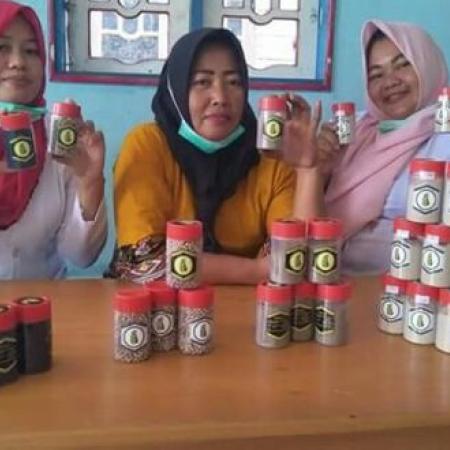
Mme Putri, épouse du chef du village, coordonne un groupe d'épouses d'agriculteurs pour créer une entreprise locale/UMKM, appelée Pondok Lada. Elle rêve que la prospérité des cultivateurs de poivre ne disparaisse pas car les prix du poivre brut fluctuent fortement chaque année. Elle entreprend donc d'augmenter le niveau d'achat de poivre brut à l'aide de Pondok Lada. Le groupe parvient à acheter du poivre brut aux agriculteurs à un prix raisonnable afin que ces derniers puissent couvrir leurs coûts de production et réaliser un bénéfice sur la vente. Pour soutenir le financement de Pondok Lada, avec les membres du groupe, elle innove des produits qui n'ont jamais été créés auparavant, par exemple une poudre de poivre pur et une qualité supérieure de poivre brut.
Pour augmenter la valeur de la marque, elle a réussi à obtenir de l'aide pour reconditionner le produit afin qu'il soit plus facile à consommer et à transporter sans perdre la valeur de l'hygiène. Aujourd'hui, en moins d'un an, Pondok Lada a participé à plusieurs sessions de formation et expositions afin d'accroître la valeur du produit et de promouvoir le produit et les organisations. Les produits ont été promus à travers le marché de l'Asie du Sud-Est dans le 4e IMT-GT & BIMPT-EAGA en Thaïlande en juillet 2018 et visait à étendre son marché pour assister à Trade Expo Indonesia en octobre 2018.

